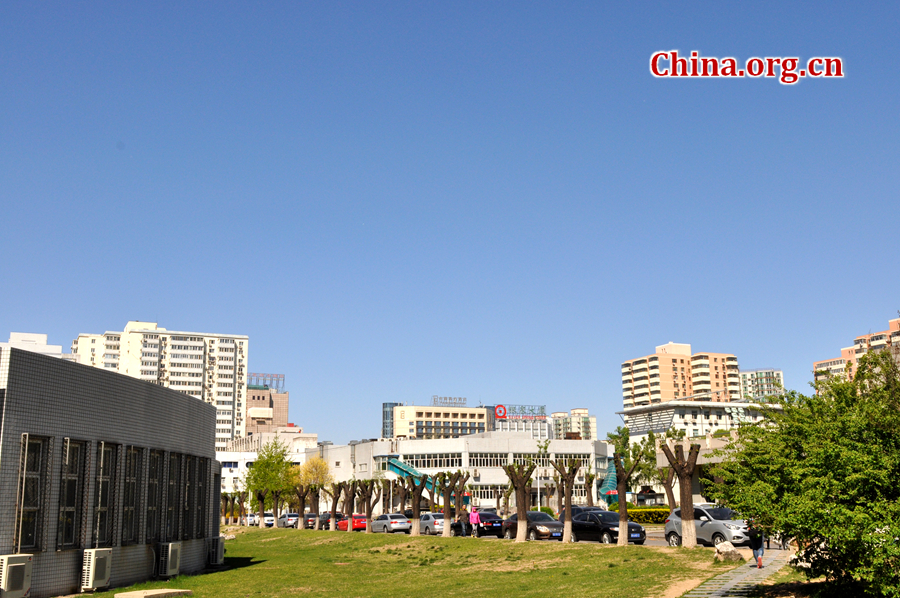Beijing breathes cleaner air at start of 2015
- By Zhang Lulu
 0 Comment(s)
0 Comment(s) Print
Print E-mail China.org.cn, May 22, 2015
E-mail China.org.cn, May 22, 2015
|
|
|
A photo taken on April 16 shows a clear blue sky in Beijing. [Photo by Gong Yingchun/China.org.cn] |
Beijing's air quality improved in the first four months of 2015, the city's environmental protection bureau reported on Thursday.
Levels of PM2.5 -- airborne particulates that contribute significantly to smog -- fell by 19.0 percent compared to the same period last year, said Fang Li, deputy director of the Beijing Municipal Environmental Protection Bureau, at a press briefing in Beijing. Nearly half of all days from January to April 2015 saw air quality levels meet the country's standard, and the number of heavy-pollution days dropped by 42 percent year-on-year.
Beijing issued a clean air action plan in 2013, pledging to focus on tackling PM2.5, reducing particle concentration by 25 percent to below 60 micrograms per cubic meter by the year 2017. The figure was 85.9 micrograms per cubic meter in 2014.
PM2.5 contamination in the city is mainly caused by vehicles and the burning of coal for heating and power. Last year, vehicles and coal-burning contributed 31.1 percent and 22.4 percent respectively to the city's PM2.5 levels, according to the Beijing Municipal Environmental Monitoring Center. In its action plan, the city promised to cut the use of coal from 23 million tons in 2012 to below 10 million tons.
In an effort to meet this target, the city closed down two coal-fired power plants this March, leaving only one such plant in operation. That plant is scheduled to be closed as late as 2017. The closure of these facilities will help reduce the use of coal by 4.6 million tons annually, according to the municipal environmental protection bureau.
The Chinese capital also benefitted from what it described as the "most vigorous" effort to keep old vehicles off the roads: 476,000 old vehicles were discarded in 2014, and 110,000 more were disposed of as of the end of this April.
Beijing shares much of its border with heavily polluted Hebei Province, and 30 percent of the capital's air pollution is believed to come from its surrounding area. But since China rolled out a national strategy of coordinated development of Beijing, Hebei and Tianjin, the three provinces and municipalities have been working closely to address environmental pollution. Such collaboration has also contributed to the improvement in air quality in Beijing in the first four months of 2015, Fang noted.
"It will still take more time for the city to see the effects brought by its various air pollution control measures," said Fang.







Go to Forum >>0 Comment(s)